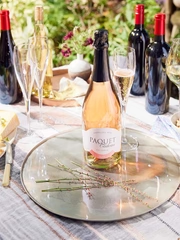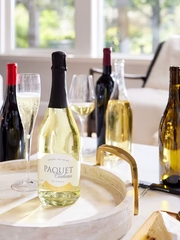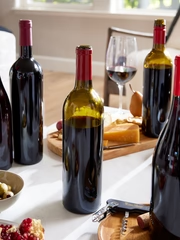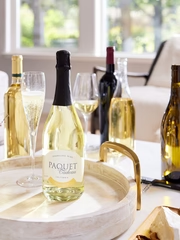The History, Fabrication and Usage
Ancient civilizations used clay amphorae (storage containers) as the main storage medium of choice for transporting oil and wine. Romans began to spread their empire across the globe. Wine was safer to drink than water due to the pH and the alcohol level. It also provided calories to malnourished troops. Egyptians and Mesopotamians used Palm Wood barrels as they weighed far less than the clay amphorae. Palm Wood barrels are considered the ancestor of wine barrels we use today.
Egyptians and Mesopotamians used Palm Wood barrels as they weighed far less than the clay amphorae. Palm Wood barrels are considered the ancestor of wine barrels we use today.
 Oak was abundant in the forests of continental Europe, and with its tight grain was a perfect waterproof storage medium. The transition to wooden barrels was swift. In less than two centuries, tens of millions of amphorae were discarded. For hundreds of years after, barrels were used only for the transportation of wine. It was only in the 1950s that people started to notice the additional benefits of storing wine in oak barrels. Wine merchants and critics helped with this movement of making oak barrels an intricate part of the world of wine.
Quercus Alba (Latin for white oak) is the most common species used for American oak barrel production. The tree has a fast growth, wider grains and lower wood tannins. Oregon, Missouri, Minnesota and Wisconsin provide premium ground for white oak tree growth.
Oak was abundant in the forests of continental Europe, and with its tight grain was a perfect waterproof storage medium. The transition to wooden barrels was swift. In less than two centuries, tens of millions of amphorae were discarded. For hundreds of years after, barrels were used only for the transportation of wine. It was only in the 1950s that people started to notice the additional benefits of storing wine in oak barrels. Wine merchants and critics helped with this movement of making oak barrels an intricate part of the world of wine.
Quercus Alba (Latin for white oak) is the most common species used for American oak barrel production. The tree has a fast growth, wider grains and lower wood tannins. Oregon, Missouri, Minnesota and Wisconsin provide premium ground for white oak tree growth.
 In European countries like France or Hungary, cooperages (barrel-making facilities) are using both Quercus robur and Quercus petraea. These ones have finer grain and richer contributionof aromatic components like vanillin. Oak trees are typically between 80–120 years old prior to harvesting. A healthy tree can provide enough wood for two 225 Liter (59 US gal) barrels. Only a short portion of the trunk, around 25%, is free of knots and imperfections. The rest is used by the furniture industry.
In European countries like France or Hungary, cooperages (barrel-making facilities) are using both Quercus robur and Quercus petraea. These ones have finer grain and richer contributionof aromatic components like vanillin. Oak trees are typically between 80–120 years old prior to harvesting. A healthy tree can provide enough wood for two 225 Liter (59 US gal) barrels. Only a short portion of the trunk, around 25%, is free of knots and imperfections. The rest is used by the furniture industry.

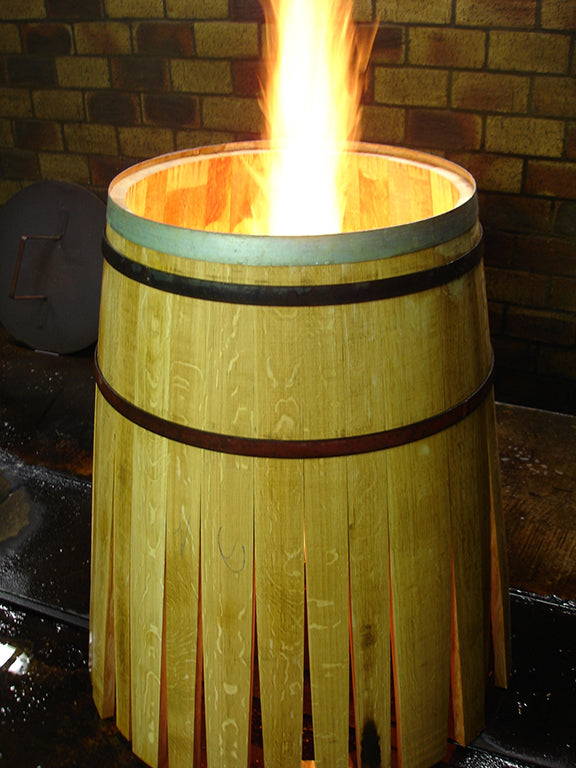 The wood is aged or "seasoned" for 24 to 36 months in the open air to soften the harsh and green tannins. This is an essential part of the process. American oak has two to four times asmany lactones (wood esters) than its French counterpart.
After toasting the barrels to the desired intensity, sweet oaky and vanilla flavors are released and will integrate later to wine. Winemakers will choose American oak for bold, powerful reds.
Winemakers blend different grapes or wines together from different terroirs to enhance the final blend. The same logic can be applied to oak barrels with the use of different forests and degrees of toasting to enhance wine complexity.
The wood is aged or "seasoned" for 24 to 36 months in the open air to soften the harsh and green tannins. This is an essential part of the process. American oak has two to four times asmany lactones (wood esters) than its French counterpart.
After toasting the barrels to the desired intensity, sweet oaky and vanilla flavors are released and will integrate later to wine. Winemakers will choose American oak for bold, powerful reds.
Winemakers blend different grapes or wines together from different terroirs to enhance the final blend. The same logic can be applied to oak barrels with the use of different forests and degrees of toasting to enhance wine complexity.
 Above are some names associated with the fabrication of a barrel. The oak wine barrel is one of the most recognizable symbols associated with wine.
Above are some names associated with the fabrication of a barrel. The oak wine barrel is one of the most recognizable symbols associated with wine.
 There are many types of barrels used in the wine business, from a 10 gallon size, to several thousand gallons in capacity. Oval shape casks, seen below, are used for fermenting and settling white wines more efficiently.
There are many types of barrels used in the wine business, from a 10 gallon size, to several thousand gallons in capacity. Oval shape casks, seen below, are used for fermenting and settling white wines more efficiently.

Coopers are building a brand new cellar full of oak uprights in Sonoma. These are not just for aging wines, but will also be used during fermentation for years to come.






